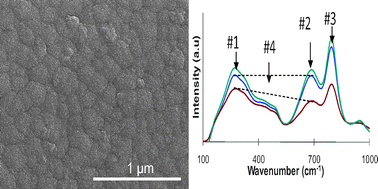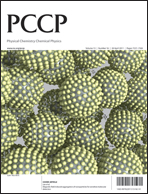It is well known that WO3 interacts efficiently with H2 gas in the presence of noble metals (such as Pd, Pt and Au) at elevated temperatures, changing its optical behaviors; and that its crystallinity plays an important role in these interactions. For the first time, we investigated the in situRaman spectra changes of WO3 films of different crystal phases, while incorporating Pd catalysts, at elevated temperatures in the presence of H2. The Pd/WO3 films were prepared using RF sputtering and subsequently annealed at 300, 400 and 500 °C in air in order to alter the dominant crystal phase. The films were then characterized using SEM, XRD, XPS, and both UV-VIS and Raman spectroscopy. In order to fundamentally study the process, the measurements were conducted when films were interacting with 1% H2 in synthetic air at elevated sample temperatures (20, 60, 100 and 140 °C). We suggest that the changes of Raman spectra under such conditions to be mainly a function of the crystal phase, transforming from monoclinic to a mix phase of monoclinic and orthorhombic achieved via increasing the annealing temperature. The as-deposited sample consistently shows similar Raman spectra responses at different operating conditions upon H2 exposure. However, increasing the annealing temperature to 500 °C tunes the optimum H2 response operating temperature to 60 °C.

You have access to this article
 Please wait while we load your content...
Something went wrong. Try again?
Please wait while we load your content...
Something went wrong. Try again?


 Please wait while we load your content...
Please wait while we load your content...